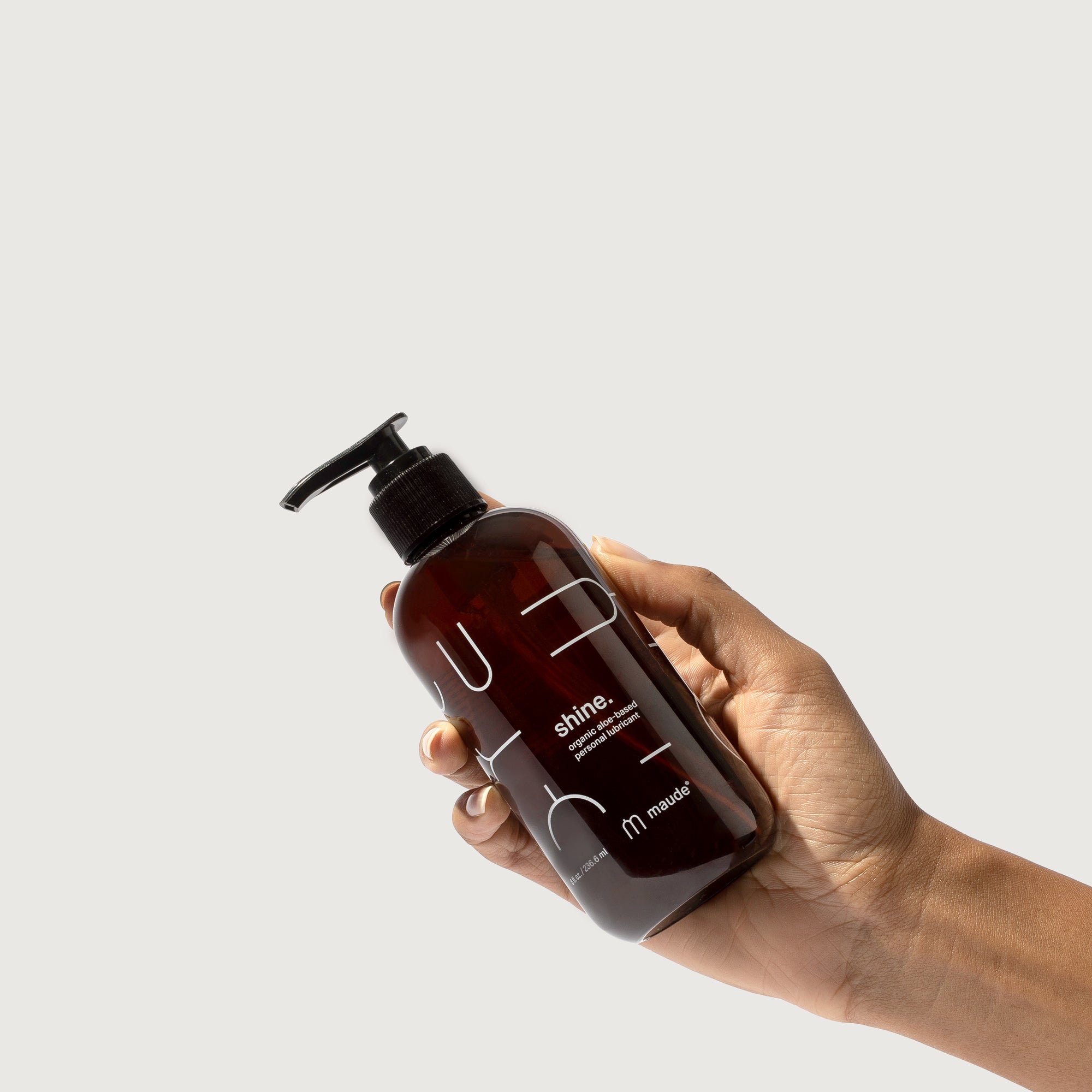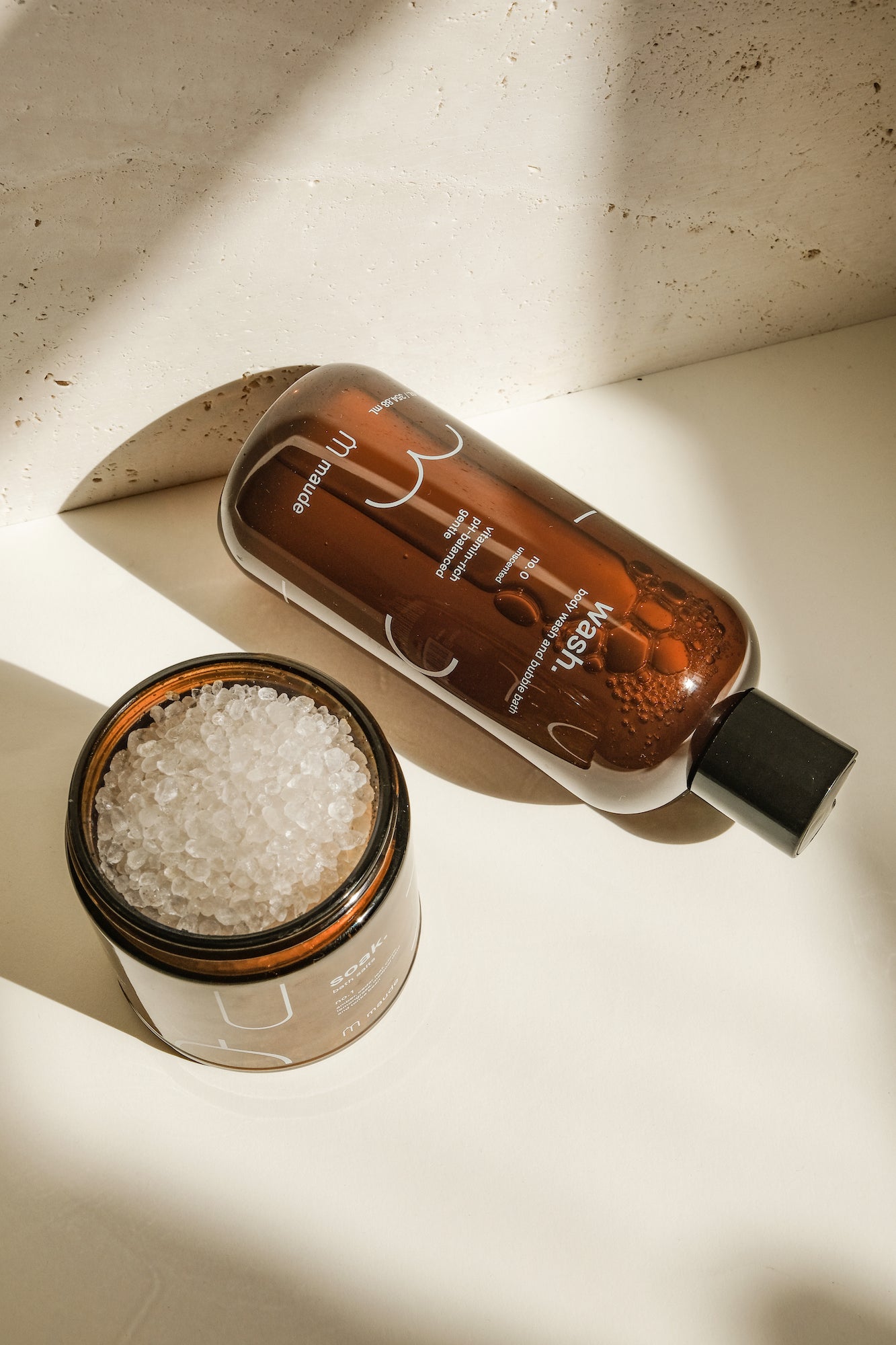The basics of skin and vaginal pH.

Everything you need to know about your body's natural balance.
In spite of what you might have told yourself after finishing high school chemistry, what you learn in class does have some important real life applications—especially when it comes to your skin. We’re not talking about lab titrations here, but rather a very simple concept: pH. This measurement of acidity and alkalinity is important to take into consideration as you pick the products that you put on your body.
Why pH is important
Generally speaking, when you have a balanced pH, things are in good working order—though different body parts each have their own optimal pH. As Healthline explains, blood is naturally alkaline (aka, basic), with a pH between 7.35 to 7.45, while stomach acid is between 1.5 to 3.5. There are plenty of factors that can change the pH of your different body parts; the products you use are one of the most important. With this in mind, maude developed wash as a skin-softening body wash that gently cleanses skin and intimate areas without irritation, and doubles as a relaxing bubble bath that doesn't disrupt pH.
Skin pH vs. vaginal pH
On average, the natural pH of your skin is 5—so, slightly acidic. This is why, if you wash your face with a normal bar of soap (which is basic—literally, and let’s be honest, figuratively, too), you’ll likely feel a bit dry. pH has become a bit of a buzzword in the beauty sphere over the past few years, some brands (particularly K-beauty) have launched products specifically labeled as pH-balanced. In 2019, the New York Times stressed the importance of taking this factor into consideration. You don’t want to use anything super-basic, but you don’t want to use anything extremely acidic, either. Each person’s complexion has a different tolerance for acids—just think of your friend who swears by her glycolic facials, verses the one who sticks to the simplest of face washes and moisturizers. Generally speaking, products that fall closely in line with your skin’s precise pH are a good bet.
When it comes to your vaginal pH, things are a little different, and there are some more risk factors beyond that 10-step skincare regimen. According to Healthline, the vagina is quite acidic, with a pH below or equal to 4.5 during reproductive years, and a little higher after menopause. The acidic environment helps prevent the growth of bacteria, so if your pH balance is off, you might find yourself needing a trip to the pharmacy: bacterial vaginosis, UTIs, and the contraction of STIs are more likely with a high vaginal pH.
How to balance your pH
The vagina is self-cleaning (you know, like a cat), but while you wash around your labia and vulva, be careful with scented soaps, which can create adverse reactions in some people and result in a higher pH, according to the NHS. The same goes for wipes and deodorants specifically marketed for “down there” usage—not only will they put you at greater risk of future discomfort, they’re also just a waste of money. Even bath bombs, as Fashionista reported, can increase your vagina’s pH, if they’re formulated with fragrances or chemicals that you might be especially sensitive to. Some recommend probiotics to help keep your pH levels balanced, but according to Harvard Medical, the jury’s out on whether there’s really a direct benefit there—always talk to your doctor before trying a new supplement.
The best way to keep a healthy pH, then, is to just let your vagina do its thing—and when it comes to your personal hygiene products, extra transparency as far as ingredients goes is always a good thing. You want to know what you’re exposing yourself to.




